How warm it will be depends on them! Heating radiators for a private house
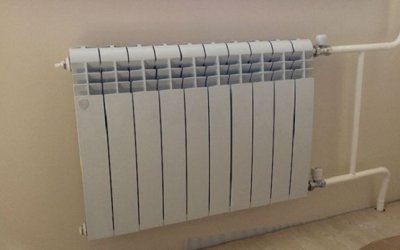
Radiator models differ by material, appearance, cost, and manufacturing brand.
The choice will help extend the service life and improve the quality of work taking into account the technical characteristics of heating: pressure, the ability to control the quality of the heat carrier, its uniform distribution through the pipes (this eliminates water hammer).
Content
- What radiators are best to install in private and country houses
- Types of devices, their main characteristics
- What models are considered good for wooden and other types of houses
- How to choose batteries
- Selection criteria
- Calculation of power, number of sections of devices
- What to do if the battery does not heat up
- Useful video
- The influence of the heating system type on the choice of radiator
What radiators are best to install in private and country houses
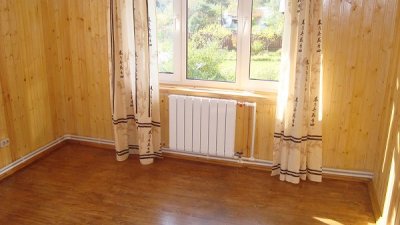
The main difference of an autonomous heating system is independence.
The owner of the building has the opportunity to create a heating schedule as desired, focusing only on the changing seasons, changes in the local climate and their own preferences.
The autonomous scheme is relevant for small villages, private houses and cottages, and also urban areas where central heating is poorly provided.
The owner of the house can turn off the system in his absence or at any need, which increases security and allows saving on utility bills. Practice shows that Autonomy pays for itself within two years.
Types of devices, their main characteristics
To choose the best option for a private home, you should understand the market offers, taking into account all technical characteristics, operational features individual goods.
Radiators are classified according to the material they are made of, which largely determines their properties.
Aluminum
Light weight, sufficient strength, aesthetics - the advantages of this group.
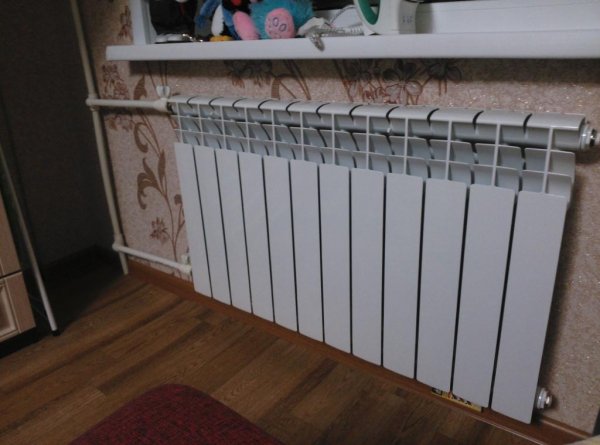
Photo 1. Aluminum heating radiator. The device consists of several sections, the number of which can be changed.
Based on the area of the heated room, a radiator with a certain number of sections is selected. Maintenance is carried out using a valve.
Important! Manufacturers produce two types of aluminum batteries, intended for apartments and houses.
Bimetallic
The structure consists of steel tube and aluminum cladding. The combination of properties of these metals allows them to withstand higher pressure and worse water quality. Stores offer options for apartments and homes. Due to the complex technologies used in manufacturing, such radiators are sold at a higher price.
Steel
They fit into the interior design and cope well with heating.. They are a little more expensive than cast iron. Suitable for private houses.
Attention! Radiators made of steel sensitive to water hammer and oxygen.
Cast iron
The cheapest. The products heat up much longer and resist corrosion. The disadvantages include heavy weight, low heat output, and the need for regular painting.
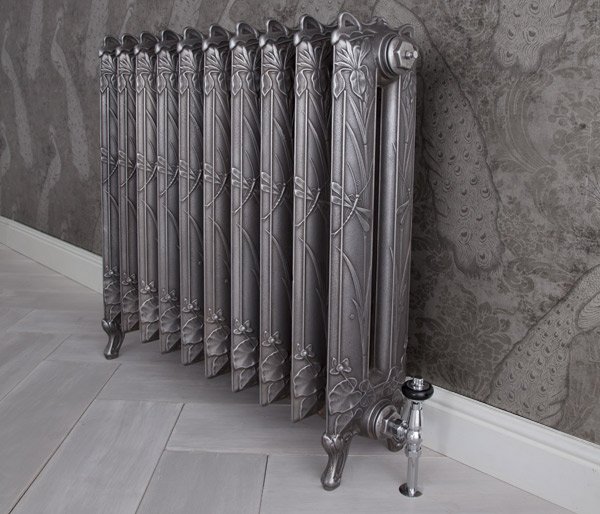
Photo 2. Cast iron heating radiator of a modern type. The device is decorated with decorative forging, matches the interior well.
What models are considered good for wooden and other types of houses
Autonomous systems are characterized by relatively low pressure 3-5 bar, low acidity, low water hardness. They do not require high-strength radiators with special wear resistance.
Considering these characteristics, high-quality models will be the best option. with maximum heat transfer coefficient, low price.
How to choose batteries
It is important to take into account during the work heating system load requirementsTo assess whether a model is suitable, they are guided by technical characteristics.
Selection criteria
When choosing heating radiators, you need to pay attention to several criteria.
Pressure
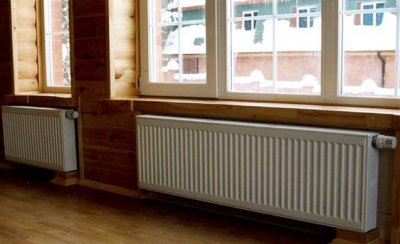
The parameter must match the heating system parameter, otherwise it may occur depressurization of battery sections, their destruction.
Operating pressure indicators of radiators in Bar:
- steel 6-8;
- cast iron 9-12;
- aluminum 6-16;
- bimetallic 25.
Temperature
In a private house with plastic heating pipes, the temperature will vary within the range 40-80 with an average indicator 60 °C. The coolant temperature depends on the heating boiler power and the ambient temperature. The radiator must withstand the heat pressure and have good heat transfer.
Power

Depends on how much heat is lost from the room.The sum of the capacities of all radiators should slightly exceed the capacity of the heating boiler.
In the future this the indicator is divided by the number of heating pointsThe power value is affected by the degree of insulation of the building, the number of walls and windows.
Material
- Aluminum - have good heat transfer.
- Steel - optimal quality for a private home combined with an aesthetic appearance. The low price allows you to create large-scale systems in large cottages without unnecessary financial costs.
- Cast iron - durable, reliable, corrosion-resistant.
Bimetallic models They will also successfully perform their function, but they are less suitable for the home due to their higher price.
Presence of a fan
The cooler will disperse the heat throughout the room, raising the temperature to approximately by 2-3 °C, which will increase the efficiency. The additional fan consumes minimal electricity, but works effectively.
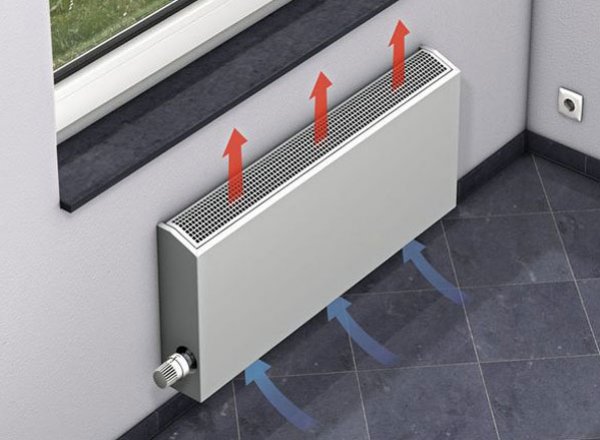
Photo 3. Diagram of how a radiator with a fan works: cold air is sucked in downwards, and warm air comes out at the top.
Designer decoration
In addition to the standard options, There are designer models on the market. They are no less effective and look especially attractive. Designer models will complement the interior, bring new accentsThey are supplemented with decorative elements that do not interfere with the performance of the main functions of the device, have a long service life, are resistant to mechanical damage, and the effects of aggressive environments.
Product brand
The Russian market offers devices from Italian, German and Turkish manufacturers.
To determine the best radiator, it is important to consider customer reviews, product quality.
Brands that most buyers trust:
- Rifar;
- Kermi;
- Konner;
- Sira;
- Ferroli.
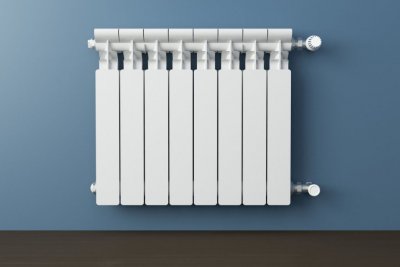
The models of these companies are distinguished by their well-thought-out design., which allows for quick installation without unnecessary complications.
There are no problems during operation either. The service life is ~ 15 years, a manufacturer's brand warranty is provided.
Based on your own financial capabilities, feedback from friends, features of the premises, technical indicators, It's easy to make a choice yourself.
Calculation of power, number of sections of devices
Since for warming up on 1 m² will be needed 100 W thermal energy, you can quickly calculate the required power and number of sections. First, measure the area (S) of the heated room.
Reference. Take into account height of rooms, number of doors, windows. Heat escapes through them most quickly. The material of window, door openings, and walls is important.
Next, the coldest temperature in the area is established, the level of heating of the coolant in the same period. For a quick calculation, the following are used: SNiP coefficients, designed to calculate the overall power of the battery.
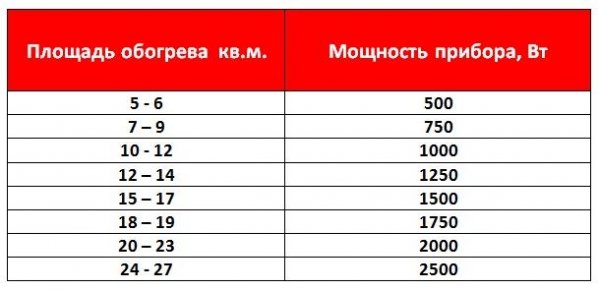
Photo 4. Table with calculation of power for heating radiators, based on the area of the heated room.
To make a preliminary calculation, multiply the S of the room by 100 W.
Important! This is an average figure, coefficients are used for correction.
Other calculation methods:
- By power of 1 section. Need to know the power 1 section of the purchased device. This data is in the technical data sheet. Then divide the power required to heat the entire room by the power of one section. The resulting number is the number of sections.
- According to the heating capacity of 1 section per volume of space. The total volume of the room is divided by the heating capacity 1 section.
- Based on practical observation. The experts noticed that the section of most batteries is capable of heating 1.8 m² at ceiling height 2.7 mTo calculate the number of sections, you will need S rooms to divide by 1.8.
What to do if the battery does not heat up

Most often, batteries do not heat up due to the following factors:
- low boiler power;
- air locks;
- blockages;
- low pressure;
- incorrect wiring;
- defects in coolant circulation;
- connection of heat exchangers.
When the radiator is cold it will be necessary to find the cause and fix the problem.
Reference. To detect air locks use built-in taps, air vents. To make sure there is no dirt, you will need to drain the water. If it is dirty, then the circuit is flushed until clean liquid flows.
If there are no contaminants or air locks, then the possible cause of the cooling is low blood pressure. They study the technical parameters of the system and eliminate defects.
Useful video
Watch the video to learn how to choose the right heating radiator.
The influence of the heating system type on the choice of radiator
Choosing the Right Radiator will prevent corrosion when in contact with water. Steel The structures can better withstand pressure changes.

In the past, preference was often given to cast iron batteries, because they retain heat longer.
Cast iron models are suitable for complexes with a solid fuel boiler and for stove heating.
Aluminum radiators are easily heated and come into contact with the chemical components of the coolant. Water prepared in a special way is used for them.
When installing large systems, high-quality ones are preferable. inexpensive steel models.
Mistakes in choosing a radiator are unacceptable. It is better to resort to the help of professionalsTheir advice will help you avoid emergency situations and eliminate the costs of repairs and alterations.








